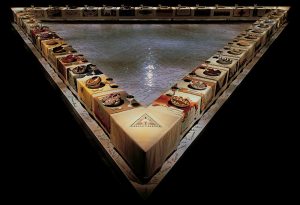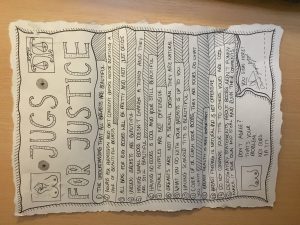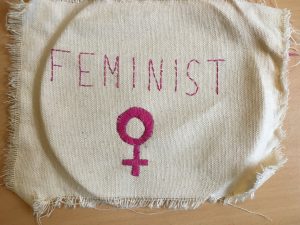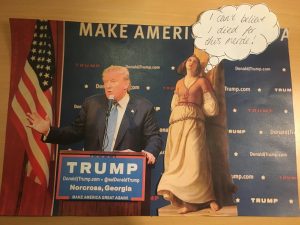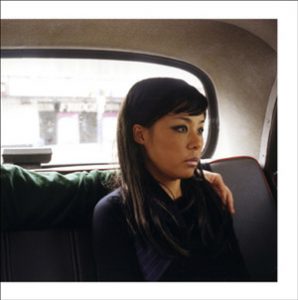The piece of contemporary I have chosen is Judy Chicago’s The Dinner Party as it is a centre piece for Feminist Art and commemorating important women throughout history. The installation piece is an excellent representation of the feminist art theory as it not only celebrates what makes a woman a woman (referring to the china-painted porcelain plates with raised central motifs that are based on vulvar and butterfly forms) as the theory explains and encourages women to express love for their bodies and biology due to women previously being shunned or considered vain or vulgar for showing their own natural form. The piece also exhibits the feminist art theory as it honours important historical female figures but it also the names of another 999 women are inscribed in gold on the white tile floor below the triangular table represents how all women from all walks of life should be appreciated and that they have not been forgotten as a prominent theme in the feminist art theory was to change/challenge the male dominated art society and society in general. The piece is also representative of the feminist art theory as it relies heavily on embroidery throughout the piece, which was a strategic use of media as it touches upon the stereotype that needle point is “women’s work” rather that it being a method to create outstanding works of art. Further challenging the patriarchal view point that embroidery is soft and delicate when it has evidently been used to create a hard hitting piece on a large scale.

